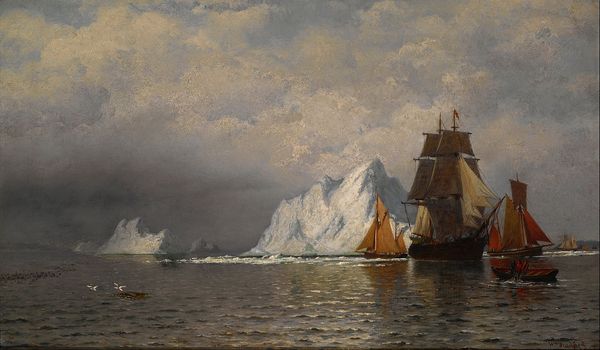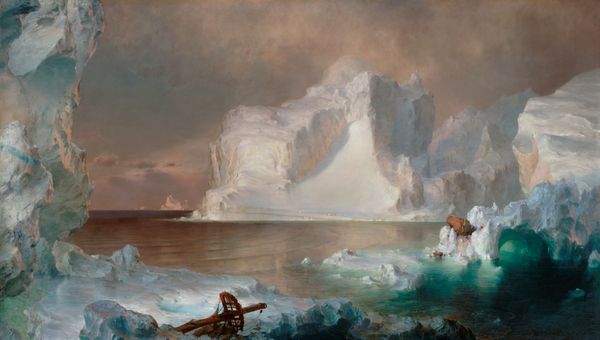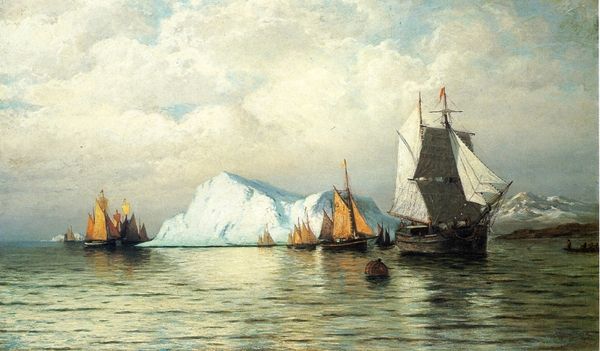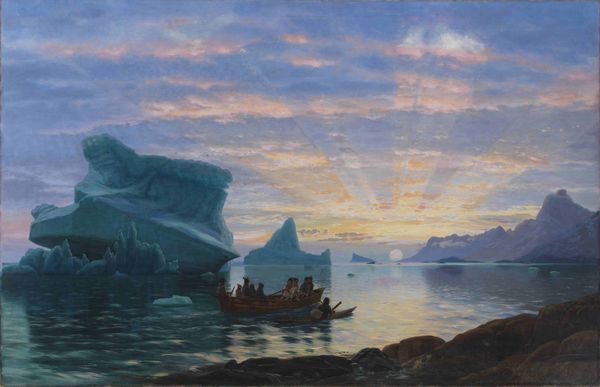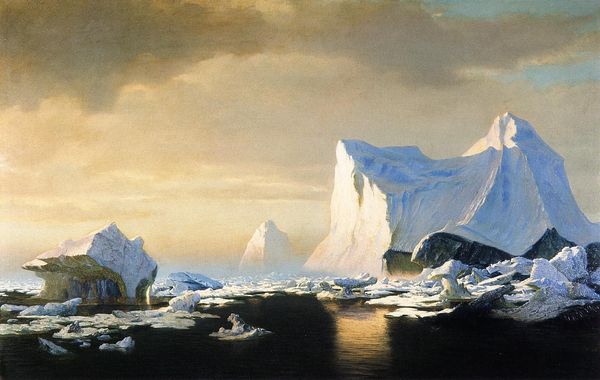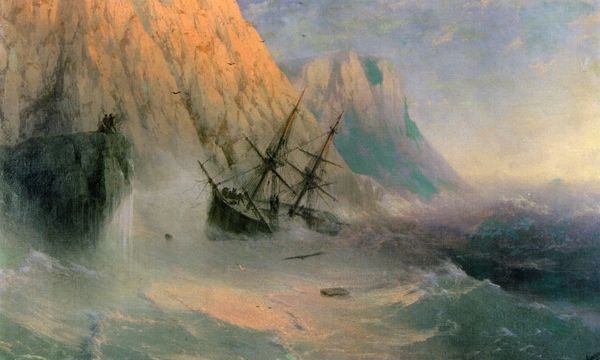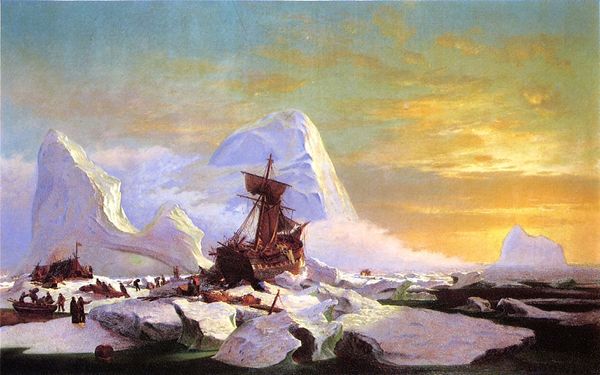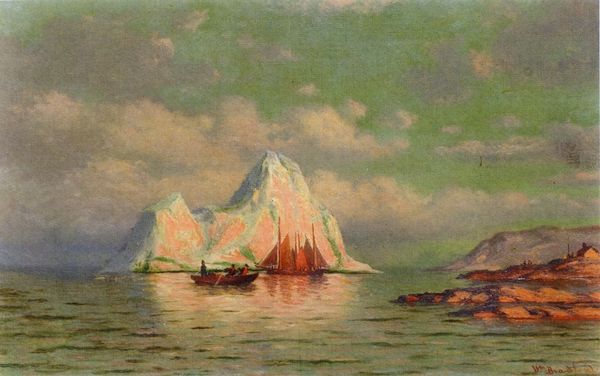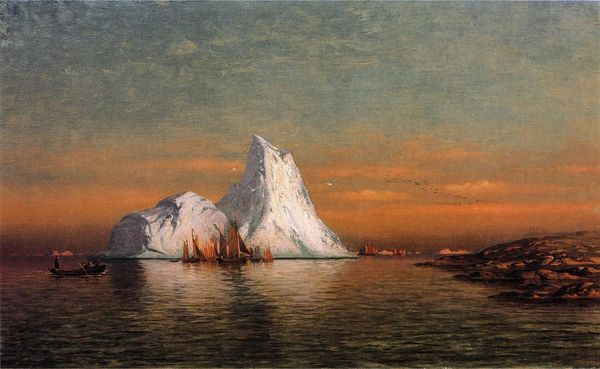
Copyright: Public domain
Curator: Woah, this makes me feel small. So cold and… silent. Is it weird to say I almost feel seasick just looking at it? Editor: Not at all! What we’re looking at is Frederic Edwin Church’s "The Iceberg," an oil painting created in 1891 and part of the collection here at the Carnegie Museum of Art. Church, a central figure in the Hudson River School, uses this image to confront the sublime. Curator: "Sublime," eh? Like, terrifying but beautiful? Because, yeah, spot on. It's like nature is flexing its power, reminding us how insignificant we are. Look at that ship! A tiny little peanut against that monstrous berg. Editor: Exactly! And it’s key to understand this within the context of 19th-century expansionism and environmental awareness—or the nascent stages of it. Think about the cultural moment: westward expansion, industrialization, a growing understanding of geological time scales. This iceberg represents something ancient, immense, and indifferent to human activity. Curator: Indifferent… I like that. It makes me think of those stories of early explorers, braving the unknown, romantic and terrifying all at once. Do you think Church ever sailed near an iceberg? Editor: It's possible, although he primarily used sketches and other artists' accounts. He was obsessed with documenting the grandeur of the natural world, travelling extensively. The way he depicts the light… it's almost unreal. He highlights the inherent vulnerability of human life versus the power of nature’s elements. This is the traditional romanticism; art becoming a tool to expose injustice by exposing the beautiful. Curator: You're right about the light. It's this odd mix of sunset colors, painting the sky in pastels, but the iceberg itself is stark, almost glowing. Makes the water look even darker, more threatening. The brushstrokes on the sea have depth, it is as if I can feel its undulation. It's brilliant, really. A perfect snapshot of awe and fear. A little melodramatic, but perfect. Editor: It's certainly a compelling commentary on the precarious relationship between humanity and the environment, still so resonant today as it would have been at the close of the 19th century. The painting is not only the subject of our own fleeting existence but about ecological issues with continued prevalence. Curator: Thanks for sharing, you’ve helped me look beyond my initial reaction of mild terror! Now, I have a deep respect. It’s almost a rallying call to not be insignificant, but be careful, I suppose? Editor: A careful observer. A good reminder that some forces are beyond our control, even if they are caused by us.
Comments
No comments
Be the first to comment and join the conversation on the ultimate creative platform.
